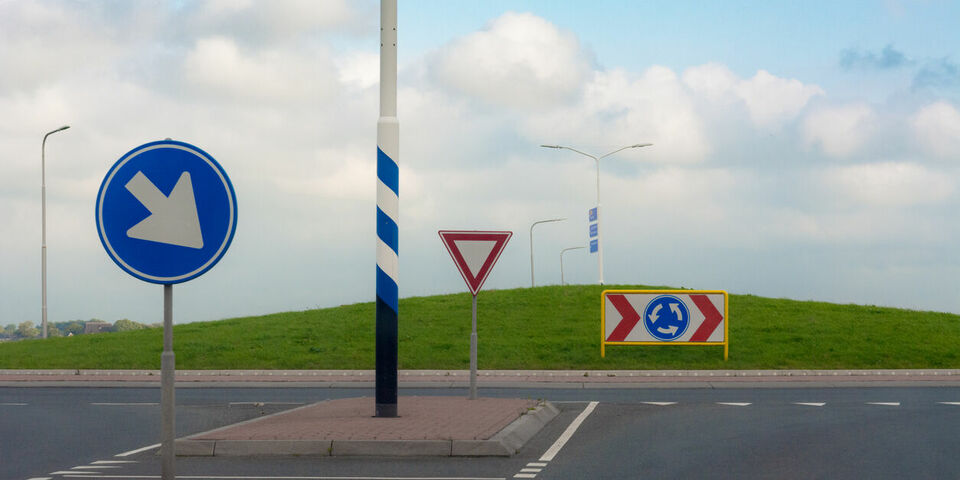New in the Netherlands: Dutch traffic regulations
Coming from another country to study in the Netherlands, you'll be confronted with so much that's new to you. Not only your degree program but also a totally different culture with its own language and customs. With this series of articles about things that are typically Dutch, we'd like to help you settle into life in the Netherlands. This time we’ll explain to you the ins and outs of Dutch traffic regulations.
Speed limit
As of March 2020, you’re not allowed to drive faster than 100 kilometers per hour (roughly 62 mph) on Dutch freeways between 6 AM and 7 PM. After 7 PM, the speed limit in most places is 120 or 130 km/h. How fast you can actually go is always indicated on roadside signs. In inner cities the speed limit is 50 km/h, but there are also zones where you can only go 30 km/h. Outside of the city limits, the general maximum speed is 80 km/h. On highways with a double continuous line with a green space between them, you can go 100 km/h.
Shark teeth
You’ve probably noticed the odd triangle on the road already. Owing to their shape, these are called shark teeth (‘haaientanden’) and they are meant to indicate who has right of way when two roads intersect. If the sharp ends of the shark teeth are pointed in your direction, this means you have to stop and give priority to the drivers on the intersecting road. Shark teeth are often combined with a traffic sign in the shape of a red triangle, which means the same thing. If you don’t see any signs, lights or shark teeth, the rule is: left yields to right.
Cyclists
Some cyclists seem to think they have right of way anytime, anywhere. But cyclists are officially seen as vehicle operators, so they have to abide by the same priority rules as car drivers. Among other things, this means that cyclists have to yield to traffic coming from the right and to pedestrians on a zebra crossing. On roundabouts, cyclists have to pay close attention to shark teeth and yield signs, because not all roundabouts have the same rules. Your bike must also be equipped with a functioning front and back light and you’re not permitted to have any electronic devices, such as smartphones, in your hand while riding. And what’s also useful to know: you can cycle alongside each other on a bike path, but you have to make room if someone wants to overtake you. You cycle on the right of the path and always overtake on the left.
Roundabout
A roundabout is a priority road, which means that as a vehicle operator you have to yield to other vehicles on the roundabout. There are roundabouts with one or more lanes, as well as turbo roundabouts with raised lane dividers. On a turbo roundabout, you have to pick a lane before entering it, because you won’t be able to switch later on. When leaving a roundabout, you have to pay close attention to possible zebra crossings and/or shark teeth indicating that you have to give way to pedestrians and cyclists.
Drinking and driving
When you get your driver’s license in the Netherlands, you’re classified as a novice driver for the first five years. As a novice driver, you can’t drive if you have more than 0.2 per mille of alcohol in your blood, which for a person weighing 75 kilos comes down to around 1 alcoholic beverage. Other vehicle operators are allowed at the wheel with a maximum of 0.5 per mille (about two glasses). If you’ve consumed more alcohol than that but your per mille doesn’t exceed 0.80, you’ll be fined €300. Between 0.80 and 1.00 per mille, the fine amounts to €425, climbing to €550 for more than 1.01 per mille and €650 for more than 1.15 per mille. Driving around the Netherlands, you’ll sometimes see signs that say ‘Bob’. This name is used in Dutch safety awareness campaigns to designate the person who deliberately stays sober to safely drive their friends home, for instance after a party. So if you and your friends are planning to drive somewhere, best to determine beforehand who’ll be the ‘Bob’.
Want to learn more about Dutch traffic rules? The Traffic in the Netherlands brochure can be downloaded for free in several languages.







Discussion